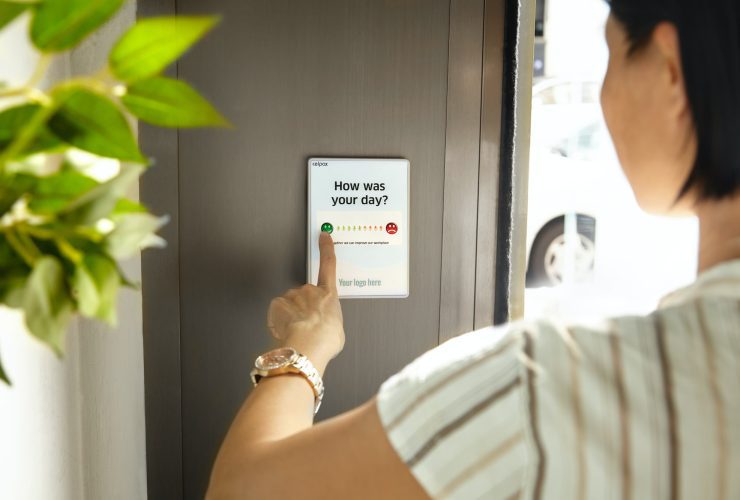How to Advertise a Medical Practice on Google: What You Can and Can’t Do
Episode Transcript: How to Advertise a Medical Practice on Google – What You Can and Can’t Do
Google Ads campaigns are a vital part of many practices’ marketing plans. Ad campaigns are a key way to get new patient leads and keep your patient pipeline full.
But patient safety and experience are important, too. Google knows this, and so they put some restrictions on ad campaigns.
In this week’s episode of the Medical Marketing Podcast, we’ll explore how to advertise a medical practice on Google by taking a deeper look at what you can and can’t do with your ad campaigns.
Why Google Places Restrictions on Ad Campaigns
Have you ever encountered a misleading ad, either online or somewhere else?
At best, it’s a minor annoyance. At worst, you could end up purchasing a product or a service that didn’t deliver.
Most times, it’s pretty easy to rectify the situation.But when it comes to advertising in healthcare, a misleading ad can put a patient’s life on the line. That’s why companies like Google place some pretty severe restrictions on what you can and can’t say on their platforms.
Google (and other companies like them) have policies in place that ensure three things: they ensure that ads are valuable, they prioritize users’ safety, and they keep advertisers accountable.
So let’s dive in to some of these restrictions. First up: what are you not allowed to advertise on Google?
What You Can’t Advertise on Google
There are four main categories of products and services that either can’t be advertised on Google or have some pretty strict restrictions placed on their use:
- Prohibited Content
- Prohibited Practices
- Restricted Content
- Editorial and Quality Standards

Prohibited Content includes dangerous products/services, inappropriate or objectionable content, or anything that enables dishonest behavior, such as hacking or other morally questionable behavior. As a healthcare provider, you likely aren’t going to fall into this category.
Prohibited Practices include things like obtaining sensitive personal information in an insecure manner, misrepresenting your credentials or experience, or promising “guaranteed” results. For Google, any of these are a big no-no.
Next we come to Restricted Content. Restricted Content includes things like adult content, alcohol, or including any copyrighted or trademarked content that you don’t own.
Healthcare-related content falls into this category as well. While Google doesn’t ban all healthcare advertising, there are some additional “hoops” healthcare providers have to jump through to advertise on Google. Some healthcare content can’t be advertised at all, while other types can only be advertised if the advertiser is certified with Google and targets only approved countries. We’ll explore this in detail later.
The final restriction Google places on advertisers is around Editorial and Technical Quality Standards – and most often, this is the reason for ad disapprovals. Google’s Editorial and Quality Standards mean that you can’t advertise with overly generic language, such as “buy products here”. You also can’t use gimmicky words, letters, or punctuation. Once you know these rules, they’re pretty easy to abide by, so this isn’t an issue for most advertisers who want to produce valuable ads.
So those are the general restrictions Google places on its advertisers.
But let’s dive a little deeper into healthcare…what are you allowed to advertise as a doctor? And more importantly, what aren’t you allowed to advertise? That’s up next.
Google’s Limitations and Restrictions on Healthcare Advertising
Now, let me say from the get-go that Google isn’t against healthcare advertising.
Quite the contrary – physicians and their practices spend a lot of money on Google Ads, because they deliver exceptional results.
But Google does have to balance advertiser dollars with patient safety and user experience. That’s why they put some restrictions in place.
Healthcare is in what Google calls the “YMYL” space, which stands for “Your Money or Your Life.”If a misleading ad or website could have an outsize adverse affect on the health, financial stability, or well-being of a user, you’d better believe that Google is going to make that advertiser or website jump through extra hoops. Healthcare providers are held to a higher standard – and rightly so.
Regulations, Regulations
Google places restrictions on many forms of healthcare advertising to comply with local regulations.
For instance, some pharmaceutical advertisers are limited by which countries they can advertise in. Speculative and/or experimental medical treatments aren’t allowed, regardless of targeting.
Some areas of healthcare, such as online pharmacies and addiction recovery centers, have to jump through additional hoops to prove their businesses are licensed and certified to provide the services they’re advertising.
And frequently, Google has to deal with both country- and state-wide regulations.
For example…
- Even though marijuana is legal in some U.S. states for both medical and recreational use…
- …Google has a blanket ban on advertising marijuana because of the patchwork of regulations.
For them, it’s easier to institute a policy banning it entirely.
The same goes for COVID-related content. If you place the word COVID or coronavirus in your ad text, you’ll get an automatic disapproval.
So that’s a bit about what services and categories aren’t allowed on Google.
But there’s one big element of running a successful Google Ads campaign that is also disallowed for healthcare advertisers: the use of personalized advertising.
Personalized Advertising and Retargeting for Healthcare
Personalized advertising and retargeting are huge elements of a successful Google Ads campaign for your practice.
Retargeting – and “personalized advertising” more broadly – is incredibly powerful. It allows you to show more relevant ads to users based on their behavior and interests, which can improve ROI and lead to better results for you.
- But as a healthcare provider, Google says you can’t use personalized advertising at all.
It’s not just healthcare: personalized advertising is restricted for any advertisers that collect Personally-Identifiable Information (PII), imply personal knowledge of sensitive information, or pertain to “sensitive categories” such as personal hardships, identity and belief, or sexual interests.
Advertisers can’t use these “sensitive interest categories” to target ads to users or to promote products or services.
What’s Not Allowed
Any health issue related to intimate body parts or functions, or invasive medical procedures is restricted by Google. This also includes treatments for health conditions and bodily health issues.
Examples include:
- Treatments for chronic health conditions like diabetes or arthritis
- Treatments for STDs
- Counseling services for mental health issues like depression or anxiety
- Information about how to support an autistic child
But some specialties fall somewhere in between. What about plastic surgery, for example? Well, general information on a cosmetic or reconstructive surgery ads is permitted in Google Ads. But more specific ads might face limitations, such as advertising breast augmentation that isn’t reconstructive surgery.
So healthcare advertisers need to tread lightly.How to Advertise as a Healthcare Provider on Google
Now, these restrictions on personalized advertising don’t mean you can’t run a successful Google Ads campaign for your practice – it just means you have to get more creative.
Just because you can’t utilize Google’s personalized advertising features doesn’t mean your campaign will be a waste. There are still plenty of ways to target the right kind of patients.
For instance, you’re not prohibited from using keyword, placement, and topic targeting.
- Keyword targeting: Target websites and pages that contain a keyword from your defined list.
- Placement targeting: Serve ads on a defined list of websites.
- Topic targeting: Target users who have visited websites and pages about specific topics.
Using these types of targeting can still help you find the right patients who need your services, so all isn’t lost.
Advertising to Healthcare Professionals? Good News
Also, it’s important to note that these restrictions only apply to physicians and practices advertising to patients. If you’re a medical device company trying to advertise your products or services to physicians, these restrictions don’t apply to you.
If that’s you, you’ll need to be clear in your ad copy and landing pages that you are marketing to healthcare professionals, not to patients. Your ads may still be disapproved – but if that happens, call your Google Ads rep to discuss the situation. Chances are, they’ll be able to lift the restriction for you.
Really, Really Need to Use Retargeting?
If you find that your campaigns aren’t performing at all without retargeting, you may have some some options using third-party providers.
If you absolutely cannot do without retargeting, simply don’t use Google for your retargeting! Use a company like AdRoll instead. Their policies don’t prohibit you from retargeting to patients as a healthcare provider. There are still some restrictions that pertain to healthcare professionals, but AdRoll is a little more lenient than Google.
So while you won’t benefit from your campaigns and metrics being in one place, a third-party provider like AdRoll may still be beneficial for retargeting patients who didn’t convert the first time.
Ok, so that’s a bit about retargeting. Next up, we’ll explore some common reasons for Google Ads disapprovals and what you can do to fix them.
Common Reasons for Google Ads Disapprovals
Even if you’re a veteran marketer, your Google Ads may still get disapproved from time to time. Here are four of the most common reasons for ad disapprovals and how to fix them:
1. Destination Not Working
Google regularly crawls your landing pages to ensure they’re providing a good experience to users. If your webpage happens “time out” or be down entirely when Google goes to crawl, they may disapprove any ads leading to that page.
Most of the time, this is a one-time thing, and resubmitting the ad to Google for reconsideration will fix this issue.
2. Multiple Websites in One Ad Group
Google only allows one domain name to be used in each ad group, so if they detect multiple websites, all ads in that group will automatically be disapproved.
You can still send ads to different pages within an ad group, but they all have to be on the same website.
If you get ads disapproved for this reason, fix your destination URLS – or reconfigure your ad groups – to solve the issue.
3. Trademarks or Copyrights in Ad Text
This one isn’t quite as common, but if you want to include trademarked or copyrighted terms in your ad text, you will have to prove that you’re authorized to use them.
This can be quite the involved process, so it’s often easier to remove the term in question from your ads.
4. Ads for Restricted Content
If the treatments or procedures you want to advertise are experimental or unproven, there’s a good chance you won’t be able to advertise them at all.
If this happens, Google will give you further guidance on what you can do in your ad disapproval notice.
Sometimes, it’s just a matter of changing your ad copy to be in compliance, while other times you won’t be able to advertise.
For instance, if you’re advertising certain plastic surgery procedures, your ads might get flagged.
As we mentioned before, advertising breast augmentation for cosmetic purposes isn’t allowed on Google, but reconstructive breast surgery is. In this case, a simple re-write of your ad copy may do the trick.
How to Deal with Ad Disapprovals
When you get an ad disapproval notice, don’t panic – it happens to everyone.
Google will give you guidance on why your ads were disapproved, and on what you have to do to fix them.
Often times, the easiest thing to do is to fix and resubmit the ads.
If that doesn’t work, you can submit a petition to the policy manager and request a manual review. Most of the time this fixes the problem, so it’s worth a try.
Google’s systems do occasionally get things wrong and flag ads for inaccurate reasons, so don’t worry if you get a disapproval email. Just work through the steps to make sure your ads are in compliance, and don’t hesitate to reach out to your account manager to see if they can help resolve the situation.
So that’s a bit about what you can and can’t do when you advertise a medical practice on Google. Hopefully you’re now better prepared to create the best campaigns possible to reach more patients and grow the practice you’ve always dreamed of.
Next Week…
Well, that’s all for today’s episode of the Medical Marketing Podcast – thanks for listening.
Next week, we have a special guest on the show – Dr. Daniel Chang of Empire Eye and Laser Center in Bakersfield, CA. We’ll talk about how to successfully grow a practice from the inside, expanding into new markets, managing the partner relationship, and successfully leading employees as a busy physician. We had a really great conversation, so you won’t want to miss it.
And if you want more practice marketing resources, check out our website at www.messenger.md. We’re always sharing helpful tips and know-how to help you improve your practice marketing, grow revenue, and take your patient experience to the next level.
That’s all for today’s episode – I’m Crawford Ifland. See you next week.







